Stories for Banned Books Week, 2024
This week, September 22-28, is Banned Books Week. While extremists continue to challenge books in schools, public libraries, and even bookstores, the past few years have seen a strong pushback. Several of the Big 5 publishers, most notably Penguin Random House, have thrown their vast resources behind lawsuits initiated by free speech organizations such as PEN America, and individual librarians, educators, authors, and bookstores. Laws such as HB 900 in Texas, forcing bookstores to rate books they sell for sexual content, have been put on hold because they are blatant violations of the Constitutional right to free speech, as well as those protecting private businesses and individuals from compelled speech. With more attention focused on freedom of expression, voters in many areas are starting to defeat stealth school board candidates who push censorship. And these stealth candidates can show up anywhere. Two members of my local Community Education Council in one of the most liberal areas of Manhattan have spoken at Moms for Liberty events against LGBTQ+ materials, transgender rights, and high school activists calling for a ceasefire in Gaza. One was temporarily suspended by the Chancellor for hate speech targeting a student, but won a lawsuit to be restored to the position. (The election to vote these stealth candidates out takes place in May 2025, and the application period for candidates in Community Education Councils in New York City begins in January.)
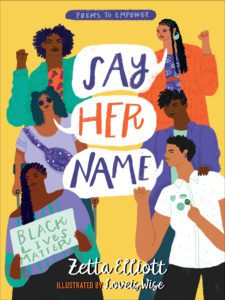 I recently attended a media training sponsored by Authors Against Book Bans. While no one will probably interview me — at this point, I have no knowledge of any of my books being banned — I want to support other authors who have been challenged. Among them are my co-author of Moonwalking, Zetta Elliott, who has had at least three books attacked by extremist organizations for their presentation of race and activism. The first was the chapter book Milo’s Museum, on a list in York, Pennsylvania of books pulled from shelves but later restored as a result of pressure from students and community members. The second was the Caldecott Honor picture book A Place Inside of Me, in which an illustration by Noa Denmon includes a Black Lives Matter sign. A Virginia state legislator even tried to ban that book from bookstores. He lost. The third was the YA poetry collection Say Her Name, dedicated to Black women activists and Black women who lost their lives to police violence.
I recently attended a media training sponsored by Authors Against Book Bans. While no one will probably interview me — at this point, I have no knowledge of any of my books being banned — I want to support other authors who have been challenged. Among them are my co-author of Moonwalking, Zetta Elliott, who has had at least three books attacked by extremist organizations for their presentation of race and activism. The first was the chapter book Milo’s Museum, on a list in York, Pennsylvania of books pulled from shelves but later restored as a result of pressure from students and community members. The second was the Caldecott Honor picture book A Place Inside of Me, in which an illustration by Noa Denmon includes a Black Lives Matter sign. A Virginia state legislator even tried to ban that book from bookstores. He lost. The third was the YA poetry collection Say Her Name, dedicated to Black women activists and Black women who lost their lives to police violence.
One of the points made in the training session is the importance of stories in showing how books enrich the lives of young people and can even save lives. The speakers cited an age appropriate nonfiction book about sexuality, Robin Harris’s It’s Perfectly Normal!, which led a middle schooler to understand she was being sexually abused and report the abuse to her mother. The abuser ended up in prison. In another case, a teacher reported that LGBTQ+ students who were unable to come out to their parents would leave YA novels by David Levithan for their parents to read, thus paving the way for a positive discussion between parent and child.
 I would like to add my own stories for anyone who wants to use them in an interview. I used to teach social studies at a high school in Williamsburg before it became gentrified. My students were reluctant readers if they read at all. There were no bookstores in their neighborhood, and few used the library. But I had a contest for all my five classes, and the grand prize was a copy of Gabriel García Márquez’s One Hundred Years of Solitude. I chose that book because my students were overwhelmingly Latinx, and I wanted to introduce them to the great works by authors who had names like theirs, or wrote about their cultures and family languages. I knew this was a difficult book for high school freshman and sophomores, but the year after, when I’d moved with my husband to Wisconsin, the girl who won the book told my best friend at the school, who was then her teacher, how much she loved the book and how it had encouraged her to explore many more works of Latin American literature. She ended up switching to a college-bound track that year as well.
I would like to add my own stories for anyone who wants to use them in an interview. I used to teach social studies at a high school in Williamsburg before it became gentrified. My students were reluctant readers if they read at all. There were no bookstores in their neighborhood, and few used the library. But I had a contest for all my five classes, and the grand prize was a copy of Gabriel García Márquez’s One Hundred Years of Solitude. I chose that book because my students were overwhelmingly Latinx, and I wanted to introduce them to the great works by authors who had names like theirs, or wrote about their cultures and family languages. I knew this was a difficult book for high school freshman and sophomores, but the year after, when I’d moved with my husband to Wisconsin, the girl who won the book told my best friend at the school, who was then her teacher, how much she loved the book and how it had encouraged her to explore many more works of Latin American literature. She ended up switching to a college-bound track that year as well.
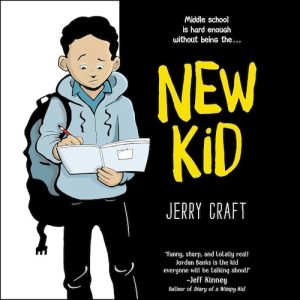
Jerry Craft’s graphic novel is a frequently censored book for its exploration of a Black kid going to an all-white private school.
Some years later, after I graduated from the University of Wisconsin’s School of Library and Information Studies, I became editor of MultiCultural Review, a journal for librarians and educators that published book reviews and scholarly articles on aspects of cultural diversity. One of the articles I published was by a teacher/administrator in El Paso, Texas. With her team, she had changed the language arts curriculum in a program for at-risk students — students who had failed regular classes, been suspended, or involved in the juvenile justice system — to feature books by Latinx authors. She saw the same thing I did with my own students: When shown books by people who shared their heritage, with stories rooted in their heritage, the students perked up and paid attention. They saw that books were for them, too. They saw that school could be for them, too. The article presented the hard data that the school collected. Fewer suspensions and other disciplinary incidents, and higher test scores.
Because a disproportionate number of challenged books and author visit cancellations have been for books by BIPOC (Black, Indigenous, People of Color) authors, I wanted to add these stories. Too many of these students have been written off over the years, and a major culprit is a school curriculum that doesn’t include their cultures and experiences…or book creators who look like them and share their names. In my novel Rogue, my autistic protagonist, Kiara, is drawn to the work of Temple Grandin because she thinks, “If Temple Grandin wrote a book, she must have turned out all right.” A book can inspire a student to take school seriously and perhaps follow in the footsteps of the author or the subject of the book. If we’re genuinely interested in the value of education, in the idea of No Child Left Behind, we must make sure we have books on our shelves for all our children.
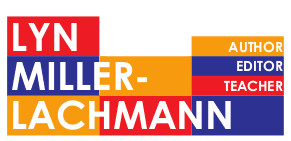
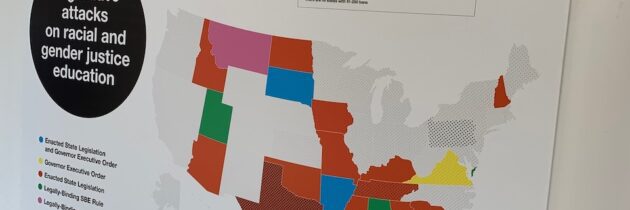
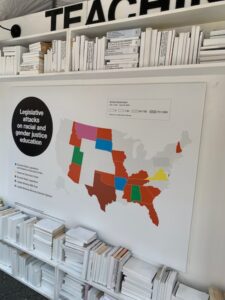





Wow. I didn’t know Zetta’s books were banned. I’d heard that Jerry’s New Kid was.
Thousands of books have been banned. Unfortunately, most of them don’t get attention and are never bought or supported. The publisher Levine Querido said their sales were down 30% as a result of book bans.